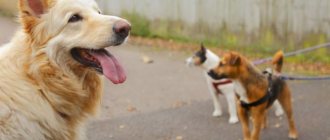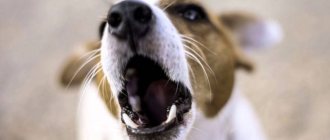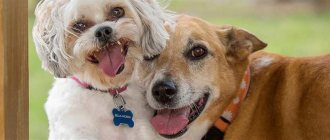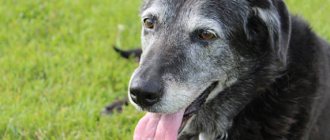How does your dog feel about riding in your car?
If she isn't afraid and enjoys traveling, chances are she'll jump into a car right away.
On the other hand, if she is afraid, she may fight you as you try to get him into the car safely, and whine or be naughty the whole way. Although this is a common dog phobia, it can be a discouraging, distracting and potentially dangerous way to ride.
Luckily, most people can help their dogs overcome this fear and feel comfortable while driving.
The key is to gradually introduce your dog to the experience by associating the car with good experiences, including lots of positive reinforcement.
Negative impressions
Some dogs associate a car with negative experiences, which can easily develop into fear. For example, many dogs only get into the car once during a trip to the vet. If your dog has negative feelings towards the vet, these feelings may spill over into car rides.
If you adopted a dog from a shelter, the likelihood that he has gone through a traumatic experience that you are unaware of increases. It is quite possible that the dog's only exposure to car travel is a trip to the shelter (or wherever he was abandoned) and a car ride to his new home. These frightening experiences can also be the cause of car phobia.
Likewise, a dog that has been in a car accident or hit by a car may have long-lasting concerns about cars in general.
Stage III. Starting the car
And finally, it’s time to accustom your pet to the sound of the engine. The same treats and praise will come to the rescue. You have to be patient here, because the sound of the engine is very frightening to dogs.
If you are convinced that your pet is calm about both the car itself and the sound of the engine running, you can move on, and in the literal sense of the word. It's time to take a little ride, maybe just around the house. Don't forget to praise your ward, give him treats and his favorite toy. Over time, you can make travel more and more remote.
Tip: It is worth giving your dog not only treats, but also water (On long trips, it is worth stopping to give your dog something to drink). The pet is very nervous, excited, breathes quickly and urgently needs to replenish its water balance.
Next steps
If your dog's fear of cars is related to motion sickness, there is a fairly simple solution as dogs can take some over-the-counter medications to relieve motion sickness.
Talk to your veterinarian about the correct brand and dosage and whether it's right for your dog. It can also help avoid car trips soon after your dog has eaten.
If your dog's fear of driving is caused by something more than motion sickness, you'll likely need to spend a little more time and effort to get rid of the phobia.
By slowly introducing your dog to the car and creating positive associations, you can help your dog enjoy car rides.
- Start by enticing your dog to the car rather than forcing him to approach. Many dogs with such fear begin to brake as soon as a car comes into view. Instead of dragging your dog towards the car, slowly lure him closer using lots of treats and praise. For mild car phobia, you can get your dog to approach the car with a few short training sessions. For more severe phobias, multiple sessions may be required. To get your dog to spend time with her, use high-value, tasty treats or her favorite toys.
- Continue to use positive reinforcement to lure your dog inside. Start by opening all the doors so your dog doesn't feel trapped inside. Use treats and praise to coax your dog into getting into the car. It often works best if two of the dog's favorite people work as a team. One can hold the dog on a leash on one side of the car while the other lies across the seat on the other side, using treats and a cheerful tone of voice to encourage the dog to get inside.
- Spend special time with your dog in the car. Don't be so quick to slam the doors and start the engine once your dog finally hops inside. Instead, leave the doors open and spend some time snuggling together. Work your way slowly towards getting into the car with the doors closed. Depending on your dog's fear level, this part of the process may take several weeks or more.
- Start the engine. Once your dog is comfortable enough to spend time in the car with you, get him. As soon as the car starts to move, give the dog a treat and talk to it in an encouraging tone; then turn off the engine. Repeat this several times until your dog feels comfortable sitting in the car with the engine running.
- Start with small trips. Don't make your dog's first trip a long drive. The first few times you go off the road, probably no more than around the block, and your helper will be giving your dog treats the entire way. Gradually increase distances.
- Take your dog to exciting places. Your dog's first long car ride shouldn't be to the vet. Instead, take this place for fun, such as to the dog park, the beach, or a parking lot for a burger. Your dog will soon associate these activities with being in the car.
Be patient and consistent with your dog and work in short sessions.
Keep a positive attitude and finish each training session before your dog has a chance to go into full-blown fear mode.
Every dog is different, and depending on how afraid your dog is, you can expect it to take time for your canine pal to conquer his fear.
You may even have to go back a few steps if your dog unexpectedly reverts to fearful behavior, which is also normal.
Stage I. Learning to be calm when being near a car
The entire training process needs to be divided into several small stages. And for starters, it’s worth teaching your dog to sit quietly next to a car with the engine turned off.
Just walk your puppy next to the car, you don’t have to go anywhere. You need to stock up on treats to treat your pet when he behaves well and does everything right. And then a walk nearby with a car will become a pleasant pastime for the dog, and he will not be horrified by the mere sight of a car. Don't forget to encourage your mentee so that he feels your support.
Tip: When training your pet for the car, treat him with small pieces and in small quantities, because if the dog eats a large meal before traveling, he may become ill.
Dogs feel fear
A dog's fear of large crowds of people can be overcome by gradually accustoming him to strangers. This needs to be done as early as possible. At the training site, dogs are always given breaks during which the animals can run, play and communicate - thus, they learn to interact with each other and build relationships with each other. Invite friends over, gradually increasing the circle of people your young dog will meet. It is worth remembering that dogs feel fear towards everything unknown to them.
Popular sedatives
In veterinary pharmacology, sedatives for dogs are presented in a huge range. Below are brief descriptions of the most popular drugs.
- Antistress. These are tablets whose sedative component is motherwort. In addition, they contain ascorbic acid, seaweed extract, and baker's yeast. They help with nervous breakdowns, calm in stressful situations, and help strengthen the pet’s immune system.
- Beaphar no stress. The drug is available in the form of drops on the withers and a diffuser. The anti-stress effect is due to valerian.
- Stop stress. Available in tablet form and drops. The composition contains phenibut, as well as extracts of medicinal plants. Suitable for large breed dogs, medium-sized animals and small pets. Acts quickly; the drug is indicated for increased arousal, provoked by fear, sexual desire, and panic.
- VetCalm. The suspension contains plant extracts. Effectively “removes” aggression and barking for no apparent reason, helps with excessive sexual arousal. You can take the drug with you on the road, use it before going to the hairdresser or to the veterinarian.
- Cat Baiyun. The manufacturer included extracts of medicinal plants in the composition of the product, which eliminate not only fears and anxiety, but also pain and spasms. In addition, Kot Bayun has a sedative effect. In the appropriate dosage, the drug is suitable for small and medium breeds, as well as large dogs.
- Fitex. These plant-based drops eliminate muscle spasms, soothe, normalize blood pressure in your pet, and support heart function in stressful situations.
- Phospasim. Homeopathic medicine created on the basis of passionflower extract. It is successfully used for neurotic conditions of the dog, phobias, and improves the behavioral factor. It also strengthens the immune system and promotes adaptation to stress.
- Pillkan 20. Active substance – megestrol acetate. Effective against excessive sexual activity in dogs of both sexes, it calms and normalizes behavior. Delays estrus if for some reason it is not necessary, for example, if an exhibition is planned and pregnancy is not needed. The product is produced in the form of sugar briquettes, soluble in water.
- Sileo. The active ingredient is dexmedetomidine hydrochloride. It copes well with panic and anxiety if the pet is sensitive to loud noise. The drug is sold in gel form in a dispenser syringe; injected into the oral cavity onto the mucous membrane.
- Nutri-Vet Anti-stress. The product contains tryptophan, taurine, hops and other plant components. Available in tablet form for chewing. Judging by the reviews, it helps to overcome anxiety, panic, fear of moving, visiting the veterinarian or performing hygiene procedures, and is effective during estrus.
In addition to the listed sedatives, in order to eliminate fear and anxiety, prevent aggression and excessive activity in dogs, strong drugs such as Xylazal or Xyla are used for medical procedures, examinations, and surgical interventions. They are available in the form of injection solutions and are used to relieve pain, muscle relaxation, and immobilize the animal.
How can you tell if your dog is excited?
An attentive owner immediately notices changes in his dog’s behavior. However, the reaction to different stimuli differs. Behavior is also influenced by heredity, gender, upbringing, and breed characteristics.
In an overexcited state, the pet:
- constantly barks or whines;
- trembles;
- the hair on the withers stands on end;
- curls ears and tail;
- has dilated pupils.
Expert opinion
Kuzmenko Olga Olegovna
Information about the expert
Ask a Question
If the dog is very frightened, it loses control of urination, so incontinence is possible. In rare cases, uncontrollable bowel movements. You can’t scold your pet here; your main task is to calm him down.
Herbs
The main types of calming herbs for dogs:
Valerian officinalis
It has a sedative effect, improves blood circulation, relieves spasms. Use alcohol (1:5) or water tincture. Too large doses can lead to depression of the nervous system. Small doses have a stimulating effect on the central nervous system.
Yellow egg capsule
Leaves, flowers and rhizomes are used for medicinal purposes. Yellow capsule has bacteriostatic and bactericidal properties.
Preparations based on it help relax smooth muscles and lower blood pressure. A decoction of the rhizome has a calming and hypnotic effect. Give to the dog 3 times a day with food.
Peppermint
Contains components that help relieve spasms, pain, and has an antiseptic and calming effect. Mint infusion is used for medicinal purposes.
Peony evasive
Properties of medicinal products based on peony root:
- pain reliever;
- soothing;
- anti-inflammatory;
- anticonvulsant.
In veterinary medicine, a 10% tincture of the plant's roots is used.











